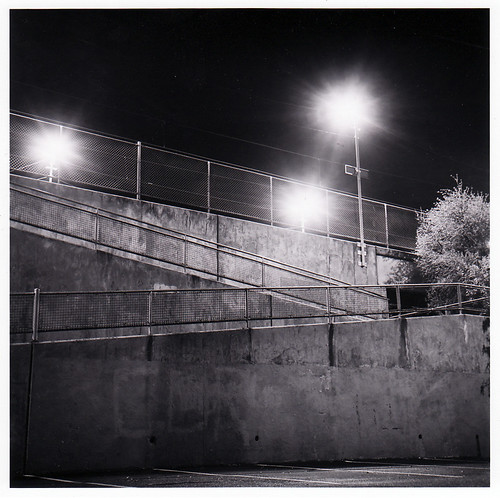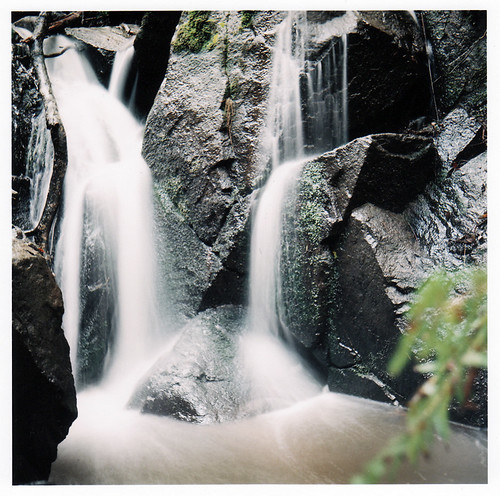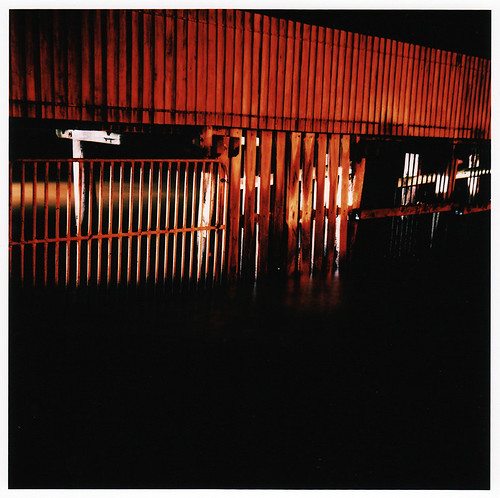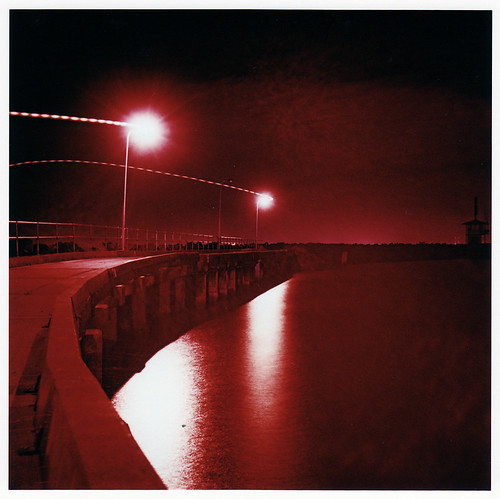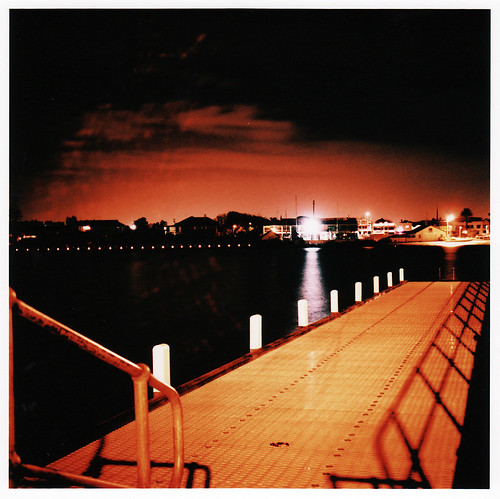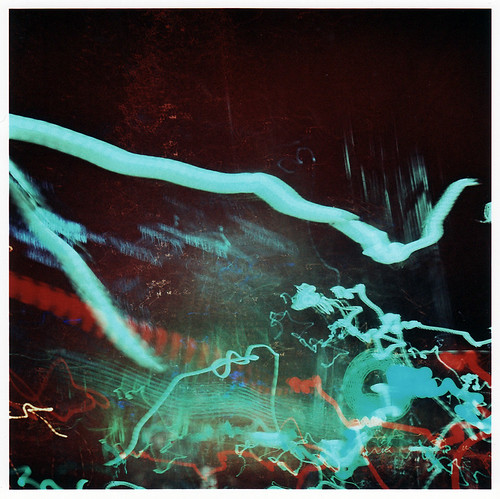Review based on a production Alpha DSLR-A900
In the cut-throat digital camera market it's increasingly unusual for products to be shown in prototype form or announced more than a matter of weeks before they hit the stores. There's several reasons for the manufacturers' habit of playing their cards so close to their chests, not least that they can't afford to harm sales of the models they've already released. Sony, the newest 'new kid' on the DLSR block, has no such worries, this being its first proper 'high end' DSLR. In fact, if anything the pressure was on the company to show it was committed to becoming a major SLR system player and that it wasn't going to squander Minolta's long legacy in this market after picking up the assets Konica Minolta shed when it pulled out of the photography market. Thus we saw the first prototype of the Alpha 900 - Sony's flagship full frame digital SLR - back in early 2007 (it appeared behind glass at trade shows such as PMA in March 07), and information has been trickling out ever since; most significantly with the announcement in January of this year of a 35mm full frame CMOS sensor.
And so when Sony finally showed the finished Alpha 900 to us back in the late summer there were few surprises at the basic specification or the appearance of the camera. As we started to dig a little deeper, pore over the fine print and actually use the Alpha 900 we were, however, increasingly surprised - and almost always pleasantly so - at some of the decisions made by Sony's engineers when designing its flagship SLR.
The success of the Alpha 900 amongst the Minolta, Konica Minolta and Sony faithful seems assured; at a launch price of just shy of $3000 it offers a lot of 'bang for your buck' and there is undoubtedly a significant number of Minolta film SLR users who've been waiting years for a full frame digital body on which to use their existing lenses. The challenge for Sony, however, is to generate some interest from people without an existing investment in the Minolta (or subsequent Alpha) system. And on paper the Alpha 900 looks promising - and we're already impressed with the build, handling and viewfinder, so let's find out how well the latest addition to the small but growing 'full frame club' performs.
Key features
- 24.6 MP 35mm format full-frame CMOS sensor (highest res in class)
- SteadyShot INSIDE full frame image sensor shift stabilization (world first)
- High Speed Dual Bionz processors
- Eye-level glass Penta-prism OVF, 100% coverage, 0.74x magnification
- 9 point AF with 10 assist points, center dual-cross AF w/2.8 sensor
- 5 frames per second burst, newly developed mirror box
- Intelligent Preview Function
- 3 User programmable custom memory modes on mode dial
- Advanced Dynamic Range Optimizer (5 step selectable)
- 40 segment honeycomb metering
- 3.0" 921K pixel Photo Quality (270 dpi) LCD display, 100% coverage
- Direct HDMI output
- ISO 200-3200 (ISO 100-6400 expanded range)
- User interchangeable focusing screens (3 options)
- CF Type I/II and MS slots, LI-ION battery, STAMINA 880 shots
- Weight 850g (without battery, card, accs)
- New Image Data Converter SR software (includes vignetting control)
- New Vertical Grip
- Supplied with wireless remote control
- Magnesium Alloy body and rubber seals for dust and moisture resistance
- AF micro adjustment
- $2999.99 body price; available late October 2008
Compared to Alpha 700 - key differences
As someone who has used the Alpha 700 extensively I was immediately struck by just how similar its new big brother is; the basic design and layout is almost identical, as are the user interface and the core feature set. Unlike Canon and Nikon, who tend to add further differentiation to their professional products with swathes of extra features and (especially) custom function options, Sony has gone for almost total consistency between the A700 and A900.
Obviously there are some pretty significant differences both physically and functionally (some of which are upgrades we'd expect to see in the Alpha 700's eventual replacement); aside from the obvious (sensor size/resolution) the key changes are:
- Dual Bionz processors (A700 only has one)
- Three custom modes on mode dial in place of A700's scene modes
- All magnesium alloy construction
- New 9 point AF with 10 assist points for Wide AF mode
- 100% viewfinder coverage (A700 is 95%)
- Improved noise reduction options (including 'off')
- Improved D-Range Optimizer auto function
- No grip sensor or built-in flash
- Top LCD info panel
- Intelligent Preview Mode
- Increased pixel pitch due to improvements in sensor design
 Sony Alpha A900 |  Sony Alpha A700 | |
| Body material | • Magnesium Alloy Chassis and exterior • Environmental seals | • Aluminum chassis • Magnesium Alloy body shell • high grade plastic exterior • Environmental seals |
| Sensor | • 35.9 x 24.0 mm CMOS sensor 'Exmor' • RGB Color Filter Array • Built-in fixed low-pass filter • 25.7 million total pixels • 24.6 million effective pixels • On-chip Column A/D Conversion & NR | • 23.5 x 15.6 mm CMOS sensor 'Exmor' • RGB Color Filter Array • Built-in fixed low-pass filter • 13.05 million total pixels • 12.25 million effective pixels • On-chip Column A/D Conversion & NR |
| Processor | Dual Bionz | Bionz |
| Crop Factor | 1x | 1.5x |
| Image sizes (3:2) | • 6048 x 4032 (24M 3:2) • 4400 x 2936 (13M 3:2) • 3024 x 2016 (6.1M 3:2) • 3924 x 2656 (11M APSC) • 2896 x 1928 (5.6M APSC) • 1984 x 1320 (2.6M APSC) | • 4288 x 2856 (L RAW) • 4272 x 2848 (L) • 3104 x 2064 (M) • 2128 x 1424 (S) |
| Auto Focus | • TTL CCD line sensors (9-points, center dual cross types + 10 assist sensors) | • TTL CCD line sensors (11-points, 10 lines with center dual cross sensor) |
| Custom modes | Three | Three |
| Bracketing | • Single or continuous bracketing • 3 or 5 frames • 0.3, 0.5 , 0.7 or 2.0 EV steps (2.0 EV steps for 3 exposures only) | • Single or continuous bracketing • 3 or 5 frames • 0.3, 0.5 or 0.7 EV steps |
| Continuous | • H: Approx 5fps max • L: Approx 3fps max • RAW: Up to 12 frames • cRAW (compressed): Up to 25 frames • RAW+JPEG: Up to 10 frames • JPEG (XFINE): Up to 11 frames • JPEG (STD/FINE): 285/105 | • H: Approx 5fps max • L: Approx 3fps max • RAW: Up to 18 frames • cRAW (compressed): Up to 25 frames • RAW+JPEG: Up to 12 frames • JPEG (XFINE): Up to 16 frames • JPEG (STD/FINE): Unlimited (to card capacity) |
| Viewfinder | • Optical glass pentaprism • Spherical Acute Matte focusing screen (interchangeable) • Frame coverage approx 100% • Magnification approx. 0.74x • Eye-relief 20 mm from eyepiece, 21 mm from frame • Eyepiece shutter | • Optical glass pentaprism • Spherical Acute Matte focusing screen (interchangeable) • Frame coverage approx 95% • Magnification approx. 0.9x • Eye-relief 25 mm from eyepiece, 21 mm from frame |
| Vertical Grip | Optional vertical Grip VG-C90AM | Optional vertical Grip VG-C70AM |
| Dimensions | 156 x 117 x 82 mm | 141.7 x 104.8 x 79.7 mm |
| Weight | • No battery: 850 g • With battery: 895 g | • No battery: 690 g • With battery: 768 g |
| Other | • Intelligent Preview mode • New raw converter software • AF Micro Adjustment • Top LCD panel | • Grip sensor |
















 Fujifilm S100 Pro Wide 11MP Digital Camera with dynamic range and face detection is a digital camera designed to meet the needs of the advanced enthusiast. It allows ease of use along with exceptional shooting control even while offering manual controls and functionality of a D-SLR. It has a 11megapixels picture resolution to ensure better quality images and prints. It displays 14.3 times magnification by the use of the optical zoom, maintaining considerable image quality during zoom-in and zoom-outs. You can also record moving picture along with audio in this digital camera.
Fujifilm S100 Pro Wide 11MP Digital Camera with dynamic range and face detection is a digital camera designed to meet the needs of the advanced enthusiast. It allows ease of use along with exceptional shooting control even while offering manual controls and functionality of a D-SLR. It has a 11megapixels picture resolution to ensure better quality images and prints. It displays 14.3 times magnification by the use of the optical zoom, maintaining considerable image quality during zoom-in and zoom-outs. You can also record moving picture along with audio in this digital camera.


 Canon EOS 40D 10.1MP Digital SLR Camera falls under the semi-professional category and appeals to people who like to try the most advanced digital SLRs. Its well built character and body quality is a strong reason to rate its value a bit above the average. Canon EOS 40D DSLR is made up of magnesium alloy body to withstand a sudden fall or an accidental crash. Thereby, it extends its durable life to give you a comprehensive photographic experience. Internal parts of this camera are well protected by its dust and moist resistance body that makes a suitable armour in many adverse photographic conditions. It is well balanced with advanced features and power, that an adventurous photographer would get benefited by its hardwearing and rugged design.
Canon EOS 40D 10.1MP Digital SLR Camera falls under the semi-professional category and appeals to people who like to try the most advanced digital SLRs. Its well built character and body quality is a strong reason to rate its value a bit above the average. Canon EOS 40D DSLR is made up of magnesium alloy body to withstand a sudden fall or an accidental crash. Thereby, it extends its durable life to give you a comprehensive photographic experience. Internal parts of this camera are well protected by its dust and moist resistance body that makes a suitable armour in many adverse photographic conditions. It is well balanced with advanced features and power, that an adventurous photographer would get benefited by its hardwearing and rugged design. Its 7.1MP sensor offers an Ultra-high refractive index to the 3x optical zoom and this sensor (35-105mm equivalence) poses a unique eye for detail even in the case of poster size images. This digital camera has a large 3” LCD screen that supports 230000 pixels.
Its 7.1MP sensor offers an Ultra-high refractive index to the 3x optical zoom and this sensor (35-105mm equivalence) poses a unique eye for detail even in the case of poster size images. This digital camera has a large 3” LCD screen that supports 230000 pixels. Canon EOS 1000D Digital SLR Camera is one of the smallest as well as lightest EOS Digital model that have hit the digital SLR market of the UK. This model weighs just 450 grams and to add to it, the built is quiet ergonomic as well. Further, this camera is effectively protected by Canons unique dust prevention system known as EOS integrated system for cleaning. If you look forward to ponder over the quick starting up times as well as the accuracy in colour realisation exhibited by this digital camera, you could just end up with its exceptional DIGIC III processor that are generally used in advanced EOS models. This processor of Canon has the ability to lower the power consumption of a digital camera as well.
Canon EOS 1000D Digital SLR Camera is one of the smallest as well as lightest EOS Digital model that have hit the digital SLR market of the UK. This model weighs just 450 grams and to add to it, the built is quiet ergonomic as well. Further, this camera is effectively protected by Canons unique dust prevention system known as EOS integrated system for cleaning. If you look forward to ponder over the quick starting up times as well as the accuracy in colour realisation exhibited by this digital camera, you could just end up with its exceptional DIGIC III processor that are generally used in advanced EOS models. This processor of Canon has the ability to lower the power consumption of a digital camera as well.
 Acer CR-5130 Digital Camera is a boon to the field of digital camera from the manufacturer Acer. The compact dimensions of this smart digital camera and the sleek looks along with the most contemporary features makes it a very popular one amongst its rivals. It comes with a width of 9.4cm, a depth of 3.5 cm and a height of 6.3cm. It weighs just 0.2 kilograms and shines silver in colour. The body material is made up of pure Aluminium and this makes the device more durable.
Acer CR-5130 Digital Camera is a boon to the field of digital camera from the manufacturer Acer. The compact dimensions of this smart digital camera and the sleek looks along with the most contemporary features makes it a very popular one amongst its rivals. It comes with a width of 9.4cm, a depth of 3.5 cm and a height of 6.3cm. It weighs just 0.2 kilograms and shines silver in colour. The body material is made up of pure Aluminium and this makes the device more durable. Digital cameras have been outfitted with the ability to support digital photography. Acer manufacturing company has proudly launched Acer CR-6530 Digital Camera in the UK market with impressive features. It is made with durable material which will last longer. Users can enjoy their hobby of photography with digital technology with the support of this camera.
Digital cameras have been outfitted with the ability to support digital photography. Acer manufacturing company has proudly launched Acer CR-6530 Digital Camera in the UK market with impressive features. It is made with durable material which will last longer. Users can enjoy their hobby of photography with digital technology with the support of this camera.





